
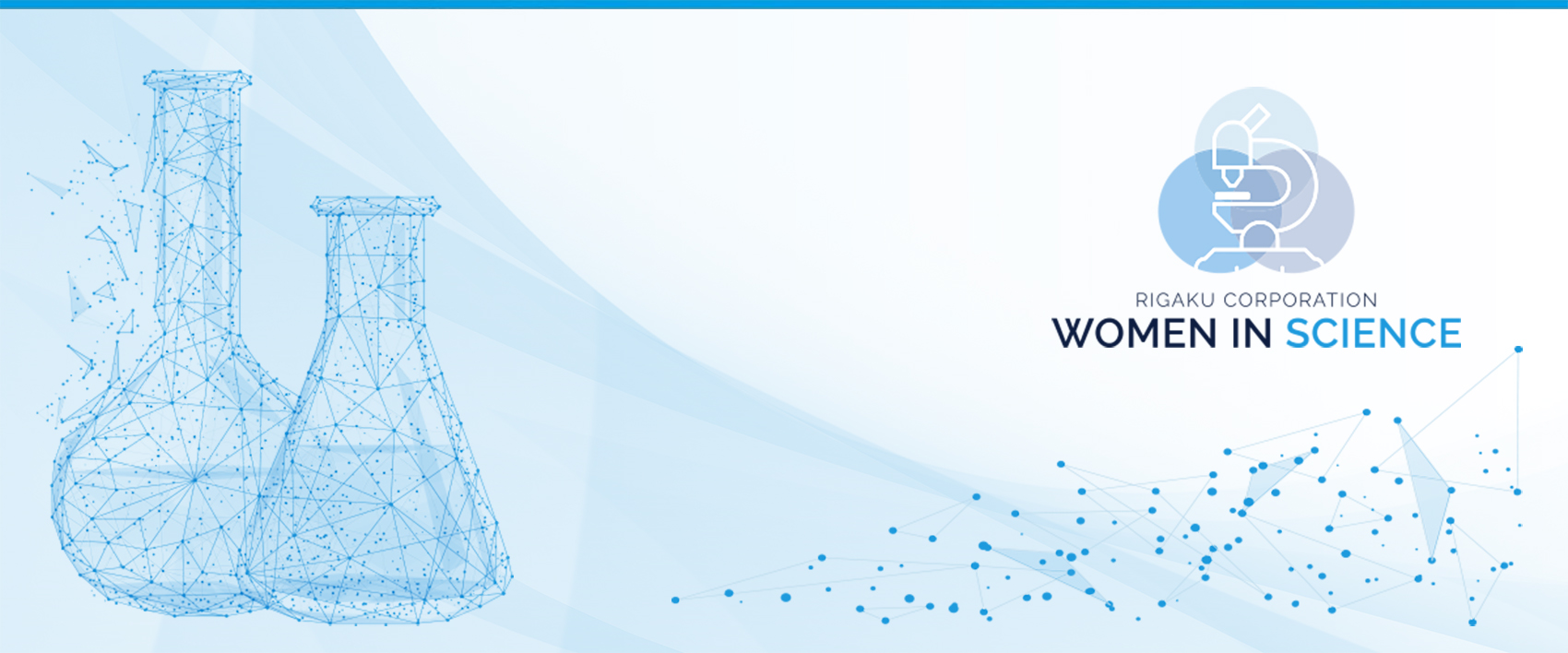
Rigaku celebrates the United Nations International Day of Women and Girls in Science which falls on February 11th. Some of Rigaku’s most popular instruments are those dedicated to single crystal X-ray diffraction, and crystallography is a research subject that attracts many female scientists thanks to the trailblazing efforts of Rosalind Franklin, Kathleen Lonsdale and Dorothy Hodgkin. Science, engineering and technology are all at the heart of Rigaku as a corporation, and these fields employ excellent scientists and engineers in all our subject areas.
By highlighting a few of our highly successful female colleagues, we aim to engage and inspire young women and girls entering STEM and encourage them to pursue their dreams.
Carmen Kaiser Brügmann
XRF Application Scientist
Neu-Isenburg, Hesse, Germany
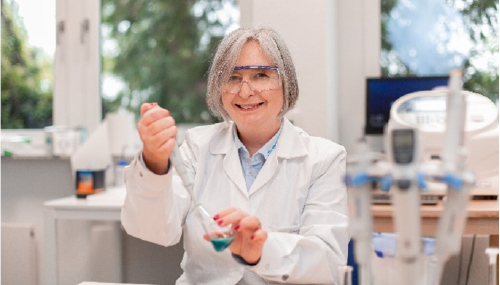
Biography:
I was born in Sailsbury, now called Harare, in Zimbabwe, I grew up there and later immigrated to South Africa. I studied in South Africa and worked there for many years. I had the great opportunity to move to Germany to work for Rigaku Europe SE. Very exciting to work for a company that prides itself in Science and Technology. Rigaku meaning Science through learning.
My passion for mathematics and science at school lead me to study chemistry. I initially started with chemical engineering, but wanted to work more in the laboratory. I was advised to move over to analytical chemistry. My mentorship was conducted with a company that had many inspiring chemists.
My foundation in chemistry was strengthened when working for a commercial laboratory, Bergstrom and Bakker, where I was first introduced to XRF. This is where I had the opportunity to work with a 1963 XRF spectrometer, which taught me many of the fundamental principles.
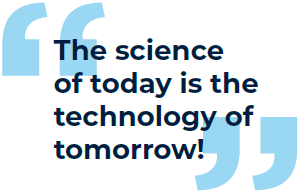
My current job title is XRF Application Scientist for Rigaku Europe SE, and I am responsible for customer support and training, technical support and problem solving, providing XRF solutions and demonstrating XRF analytical equipment to show our customers how to test and fingerprint their materials for Industrial applications, research and development. My work ensures that we collaborate with our customers to resolve their own challenges in the scientific and industrial world.
I am passionate about science since experimental work is exciting and always teaches one to do more research. It makes you learn something new every day. The science of today is the technology of tomorrow!
The most exciting work I have completed was the research, procurement, commissioning, installation, training and calibration work done for the 19 factories at PPC Cement. In a three-year period as an XRF specialist, I had the opportunity to install seven new XRF spectrometers over the footprint of Africa. Very rewarding to teach and train a global nation and empower the people to use their analytical equipment to achieve the quality testing in the cement industry.
The most interesting work I have completed was the development, validation and verification of the direct mercury analyzer for the air quality project at PPC Cement.
http://analitek.com/wp-content/uploads/2018/07/PPC-Cement-case-study.pdf
The most rewarding work I have completed was the ISO 17025 accreditation of the XRF spectrometer and sample preparation for fused beads and pressed powder.
Summary about my professional background:
Studied analytical chemistry at Wits University
The most memorable thing that has happened to me while working in science:
Was when I had the opportunity to travel to Rwanda and the DRC as the only female with a group of technical colleagues for the calibration and training on a new XRF spectrometer for quality control.
I worked for PPC Cement from the period of 2000 to 2019, as a Research Chemist then a Senior Chemist and as an XRF Specialist. I have 19 years of working experience.
The work done at PPC Cement entailed application support on all XRF instruments in the group.
Quality assurance is required at all production sites to be able to produce accurate and reliable analytical data for process control. In order to achieve this, I ensured that sample preparation for all X-ray fluorescence (XRF) followed best operating practices, calibration curves on the XRF instruments were matrix matched and mineralogicically representative of the materials used in the process.
I conducted reviews on XRF, sample preparation and quality best operating methods throughout all PPC plants, ranging from inland, coastal and international sites located in other African countries.
Previous positions held have been as Senior Chemist and later as Research Chemist in the Chemistry Reference Laboratory at the ISO 17025 Accredited Group Laboratory Operations (Group).
My knowledge and vast experience is on working with various types of XRF instruments ranging from energy dispersive, wavelength dispersive, sequential and simultaneous spectrometers.
I have extensive knowledge and experience in other analytical techniques including ICP-MS, ICP-OES, XRD, FTIR Ion Chromatography and general wet chemistry. My problem-solving skills and analytical knowledge in XRF spectrometry, wet chemistry analysis and sample preparation methods is key to providing much needed technical support to the Group on various different types of analytical equipment used for testing various materials in the cement industry.
I also provided software support to the Group on the various XRF instrument types.
I provided training (XRF spectrometry, wet chemistry and sample preparation best practices) to the Group quality personnel.
I possess strong analytical skills and pay attention to details.
Angela Criswell
Senior Scientist, Materials Analysis Division
Houston, Texas, U.S.
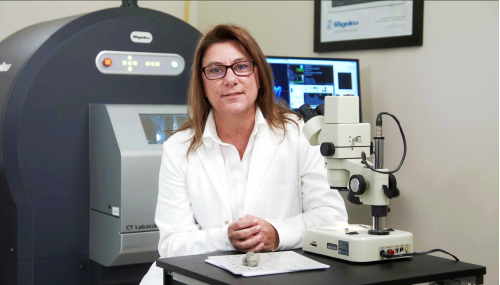
How/why did you get into science?
I’ve always been interested in science and knew I would get a degree in a scientific field. During college, I volunteered in a microbiology lab and then took a job in a crystallography lab with Dr. Kurt Krause. He and my organic chemistry TA, Toyin Asojo, who is also a crystallographer, sparked my interest in the technique and inspired me to go to graduate school.
What is your professional background?
I joined Rigaku in 2002 after finishing my Ph.D. and have been here since then. I joined in the crystallography group and have since learned many X-ray techniques during my tenure, including X-ray scattering and X-ray tomography.
Where did you get your education?
I received my undergraduate degree at the University of Houston and my Ph.D. at Rice University, where I worked in the lab of George Phillips.
What is your current role at Rigaku?
I primarily work in X-ray Imaging, but I also support our X-ray Scattering products.
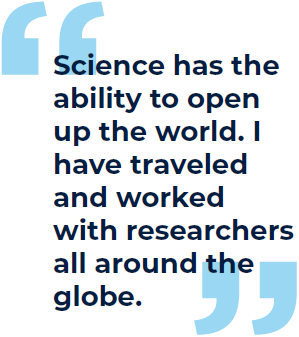
What makes you passionate about your scientific field?
While working at Rigaku, I have met so many great people and scientists, who inspire me. They are working on difficult problems from targeting disease and improving human health to developing the products and tools we use every day. I have really loved working with so many people in my field and seeing them grow and progress to do some really terrific things.
What were the biggest obstacles you had to overcome? Did you ever have the impression that it would be easier/harder if you were male?
I feel very fortunate that my start in science and my career happened during the last 20+ years when there’s been so many opportunities to meet women who have been great mentors and examples of what success can look like for women.
If you need support or have any questions, please just ask!
Magdalena Grzywa
XRF Application Scientist
Frankfurt Rhine, Germany
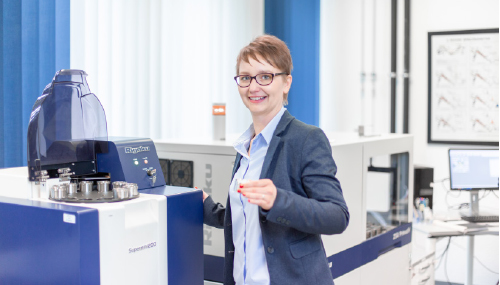
I think my adventure with science started in seventh grade in elementary school. I really enjoyed the experiments in physics and chemistry. I was lucky that the teachers were passionate about their work and showed us many experiments. That’s why choosing a biochemistry class in high school was obvious to me. It was only possible in a school that was “girls only” in the old days. Even the namesake of the high school itself, Emilia Plater, who lived in the nineteenth century, had short hair, wore pants, rode a horse and even fought.... she gave us an example of a woman who could be anything she wanted to be, even many years ago.
After my final exams I went to study Macro: Industrial and Engineering Chemistry in English at the Silesian University of Technology. I was looking for my way. I joined Science Circle and IAESTE. I quickly got the opportunity to combine my studies in Macro with Biotechnology. I went on Erasmus exchange to TU Vienna for half a year, working mainly in a research lab. From the IAESTE I was having practice in Quinn Plastics near Prague. I traveled to learn more, meet new people and exchange ideas.
From that intense time, I still remember the math professor who kept telling us to “be good or be dead” and I remember a strong phrase from a TU Vienna professor who told me “good…. is good enough.”
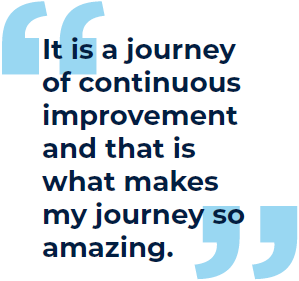
Being “dead” was never an option, but it took me a while to learn that being good and “good is good enough” have to be in balance.
Just before earning my master’s degree, I won a competition that gave me an internship at the pharmaceutical company Adamed, and after my master’s exam I did my Ph.D. at Constance in Germany.
It was an amazing time studying on beautiful Lake Constance and near the mountains. I met amazing people there, those friendships will stay with me. I started with organic synthesis and then modifying PAR proteins from synthesized compounds, and I worked with different NMR, HPLC, electrophoresis, MS techniques. Each new step was exciting, but also challenging.
I am married, we have a daughter, I am a “normal” woman with my “feminine” hobbies such as baking and crocheting. Just before my Ph.D. presentation, I held my daughter in my arms in front of the entire audience.
Science is exciting, looking for answers by doing experiments is exciting, but at the same time being rational, coldly analyzing the results, being a little more skeptical to be sure it is true. Nature teaches you to be tough and patient, to not give up when answers and solutions don’t come quickly or easily but it also teaches you humility.
After my maternity period I joined the MINT group at Augsburg University. I worked on two projects on carbon fibers and rare earth elements in flat screens. I prepared experiments for students in grades 6 to 12 to awaken their passion for science.
Now I am proud to be part of the growing applications team at Rigaku Europe, a subsidiary of the Japanese company Rigaku Corporation. As an XRF scientist, I help find solutions for different applications. I meet many people from different countries, discussing about their needs which makes my job even more exciting. I learn more every day at Rigaku.
It is a journey of continuous improvement and that is what makes my journey so amazing.
Yuri Maruko
Instrument Scientist
Takatsuki-shi, Osaka, Japan

I think I started to take an interest in science when I was a child. My parents and grandparents took me to various museums, science museums and art galleries. I liked to watch the pendulum swing by in the exhibit of mechanical energy in the Children’s Science Museum. That was when I wondered about the principles of science for the first time.
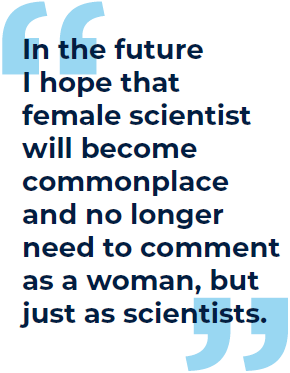
A turning point for me entering into a field of science was when I enrolled to Hachinohe National Institute of Technology (HNCT). I was interested in large analytical instruments, technical studies and exclusive facilities while touring the campus. I had just read a book about the history of elements, so I entered into the Department of Materials Engineering. I like manufacturing, but my family was surprised because I was planning to study humanities. While in HNCT, I created simple electronic circuits and programs to move small robots in Robocon.
After a while, I wanted to create something new on a big scale in the future. For that purpose, I decided to study at Nagaoka University of Technology. At the Nanobio Materials Laboratory, we researched the design of oriented mesoporous silica films for guiding protein adsorption states. I used to use Rigaku’s XRD frequently for my research while attending Nagaoka.
When I started at Rigaku, I worked on XRF for elemental analysis. I measured samples for customers who were considering purchasing equipment. I’m still studying about basic analysis. In the future, I’d like to create a new field of XRF applications in step with the times.
Now, I’m working on analysis and elements so I’ve I decide to study engineering. When I was a child, I thought that studying would make me smarter, but now I find that the more I learn, the more I realize how much I don’t know.
Currently, lessons in school are rarely held separately for men and women. Education is being taught more equally. We have many opportunities to come in contact with various things. I was born during great times, so I don’t feel any gender barriers about STEM. When I decide what I wanted to do for school or a job, I chose what I liked at that time. Therefore, I became an engineer.
Because there are only a few women in STEM, we are often asked to make comments like this from the standpoint of women. Considering the history of the wide gap between genders, we are now in the stage of establishing being a role model for female scientists.
When I was in college, I taught a science experience class for children at a school festival. Boys and girls enjoyed science. In the future I hope that female scientist will become commonplace and no longer need to comment as a woman, but just as scientists.
Suzanne Schreyer
Senior Scientist
Wilmington, Massachusetts, U.S.
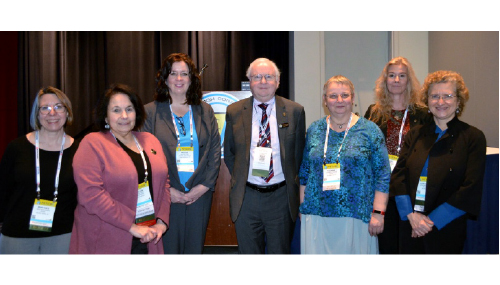
Biography:
I grew up in a very science-oriented family. My mother was a dentist and my father an engineer, so it was always encouraged that my brother and I would also go into the STEM fields. Fortunately, I loved chemistry and was playing with chemistry sets at an early age. In those days, the chemistry sets actually contained real chemicals and you could really make a big mess, mixing up stuff! When I was in the seventh grade, I recall telling my mother that I was going to be a doctor in chemistry. I do not know whether she believed I would do it or not—but, ever since then, that was the goal I kept to.
In retrospect—this was not the easiest path forward. But along the way I got my undergraduate degrees in chemistry and another in education (Bachelors of Science and Bachelor of Education; University of Calgary). I worked as a science teacher and then left and worked as an oil field corrosion chemist in Calgary, Alberta. This was the 1980s, so there were not a lot of women in the oil field.
Anecdote:
I was one of the first women to work in the oil field—I recall going out in winter with all the guys to drill a well in northern Alberta. Given the layers you have to wear due to the cold, it was not immediately obvious that I was female. As the chemist on site, I was monitoring the progress of the drill on my headset, and the chemicals used. At one point, the foreman was requesting information on what to add, and I chimed in. I remember there was dead silence on the radio and then the foreman said “Watch your [expletive] language—there’s a [expletive] woman on the site!”
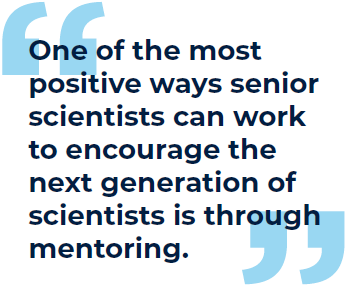
After a couple of years, I went back to university to get my engineering qualifications as that was the only way to move forward career-wise. Also, I still wanted to go on to grad school so I wanted to fill in courses and grades to qualify. I completed my Bachelor of Applied Science (Engineering Chemistry) at Queens University in Ontario. Then with the encouragement and support of a super mentor, Dr. Viola Birss, I began graduate school in chemistry. I received my Masters in Chemistry (Development of a synthetic enzyme), then went onto receive my Ph.D. in Analytical Chemistry (2000) at the University of Waterloo (chemometric analysis). I was fortunate to do a post doc with Dr. Peter Wentzall in chemometrics, who was probably responsible for so many young scientists getting interested and encouraged in the field.
Aside:
I was fortunate to have some awesome mentors who encouraged and pushed me into graduate school and helped me follow my dream. One of the most positive ways senior scientists can work to encourage the next generation of scientists is through mentoring. I have taken part in some mentoring sessions at the EAS conference, and it is encouraging to see all the up and coming talent and their passion for the field. Mentors can provide practical advice and at the very least encouraging words to hang in there and persist.
The statistics for women in engineering are low, and for women pursuing graduate degrees in STEM, the dropout rate was high as well when I went through. There are enough difficulties placed in the way, so the role of a mentor is important just to maintain your sanity and to keep persevering.
What is your professional background?
After Wentzall’s group I went into the pharmaceutical field, starting at Pharmacia (Michigan) as a chemometrician. There I worked with Dr. Christian Parker (screening data analysis) and Dr. Gerry Maggiora (QSAR/QSPR). Both were ideal mentors for a new scientist as they are very knowledgeable in their fields and push you to your capabilities. I stayed in the pharmaceutical field for the next few years working on building chemometric models and gaining experience. During this time, I was also doing some contract work with Dr. Daniak’s group at Yale/New Haven Health. He was studying blood disorders of Chernobyl victims and I did some chemometric data analysis for them. This is probably the period where I did most of the traditional papers and scientific presentations. Once I switched into the instrumental field, I was more of an applied scientist rather than R&D.
In 2007, I switched into the instrumental field at a startup Polychromix developing NIR instrumentation. Being at a startup is very exciting as your job is much more varied. I developed chemometric models for clients, built library databases and worked in a myriad of fields (pharma, safety/security and food/ag). After being acquired by Thermo, I continued with instrumental applications (NIR, Raman, IR).
What is your current role at Rigaku?
In 2016, I joined Rigaku as the Senior Scientist for Raman. I am responsible for the library development for pharma and safety/ security applications. I also assist users with developing custom libraries and applications. One of my favorite parts of the job is actually going to customer sites and working with them for their specific applications. Our users—primarily in safety and security fields—are doing some very interesting work and it is very interesting to get a “back stage” peek at what they are doing. It also helps me in the library building and development. Also, Rigaku is very collaborative so I also like to get involved in providing technical expertise across the different groups (Manufacturing, Software, Marketing, Sales)
What makes you passionate about your scientific field?
Oh! So much. Chemistry is a very diverse field and it is the basis of life, the universe and everything. (I know—mathematicians disagree and say that math is behind everything). Having a Ph.D. means that I became highly specialized in just one small area of it—so I am very passionate about data. I love getting data sets and then delving down into them, and letting the data tell me its story. Most of the time it is routine (but still enjoyable), but occasionally the data surprises you with an interesting twist. Those “ooohhh” moments are a real endorphin rush.
One example of an “ooohhh” moment I had was when I was doing some standard data analysis on microarray data, when there was a series of outliers that consistently kept appearing. They did not fit the model I thought I was building, so I pulled them out and brought them to the hematologist (principal investigator). Turns out they belong to a specific cytokine family and were expressed in specific instances when patients develop or can develop leukemia. This was published as findings for victims of radioactive exposure at Chernobyl.
What are the hardest parts related to this work?
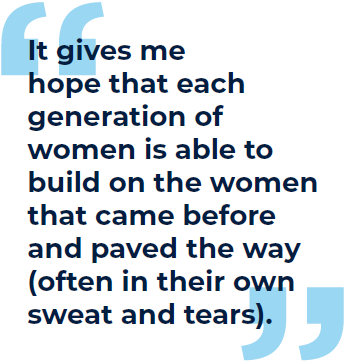
As a Ph.D. scientist you mostly are responsible for your work and left alone to do it. The best part of the job but also the hardest is that the onus is on you to do it right. As a scientist you have to be self-motivating and persist despite whatever roadblocks or problems arise. At this point in my career, it is easier to keep going and resolve problems, but earlier in one’s career or in grad school this is a hard lesson to learn. It really is on you—and how are you going to fix it. Also, in science you sometimes do not know if something is possible—so you preserve and try and figure out where the facts and research are leading you, but sometimes it just leads to a dead end. That can be frustrating.
What is the funniest or most memorable thing that has happened to you while working in science? What were the biggest obstacles you had to overcome? Did you ever have the impression that it would be easier/harder if you were male?
I love it that my niece and other young women assume they can do whatever they want as they choose careers and fields of study. It gives me hope that each generation of women is able to build on the women that came before and paved the way (often in their own sweat and tears). And I love that we are slowly recognizing these early pioneers and retroactively giving them credit for their discovers that were often assigned to their male colleagues. So—I was thankful when I started in my field there were precedents and women before me had led the way. But the small handful of us that were engineers and scientists in the 1980’s still had to deal with the attitude that we were often considered female first. And grudgingly for some colleagues, only scientists and engineers after we had “proved ourselves.”
The biggest obstacles we had to overcome was not breaking new ground into the field but preserving so that it would be considered more the norm—this is what women do—we are scientists and engineers and doctors… My biggest obstacles and the stories I have are mostly due to the attitude that we encountered during the 1980’s and 90’s when we were young women starting out in school and our career.
These two questions (funny moments and obstacles) often go together for women scientists. I can recall several eye rolling moments:
- Studying calculus for an exam—a friend of the family asked if I was going to be a nurse. I said no—a chemist. She was startled and blurted out “Oh! You must have a man brain.”
- Start of physics class—the professor sees a small minority of women in the class. He informs us that girls generally do not pass the class so we should quit now. I stuck it out and got a good grade. He was waiting when I picked it up because he was so happy that a girl finally made it through. He also told me I must have a man brain.
- Working in the oil field and other traditionally overwhelmingly male dominated fields during the 1980’s—you get used to a lot of comment/harassment. It was generally more from engineering colleagues who tend to be patronizing to a young woman. One good moment—the crew chief asking me about an issue and how to resolve it—while the other engineer was standing there. When he tried to butt in, the crew chief just told him—“I’m asking her. She knows.”
- Sitting in a meeting room with other engineers and the director (all male). He turns to a colleague and asks him if I had done the testing. I say I am right here…. To which he responds that he didn’t see me. I respond with “I must be invisible then.” Must be a super power of middle aged women that they can disappear.
- Three of us women of a certain age at a previous company in STEM. One of the directors used to interchangeably call us by each others’ names.
